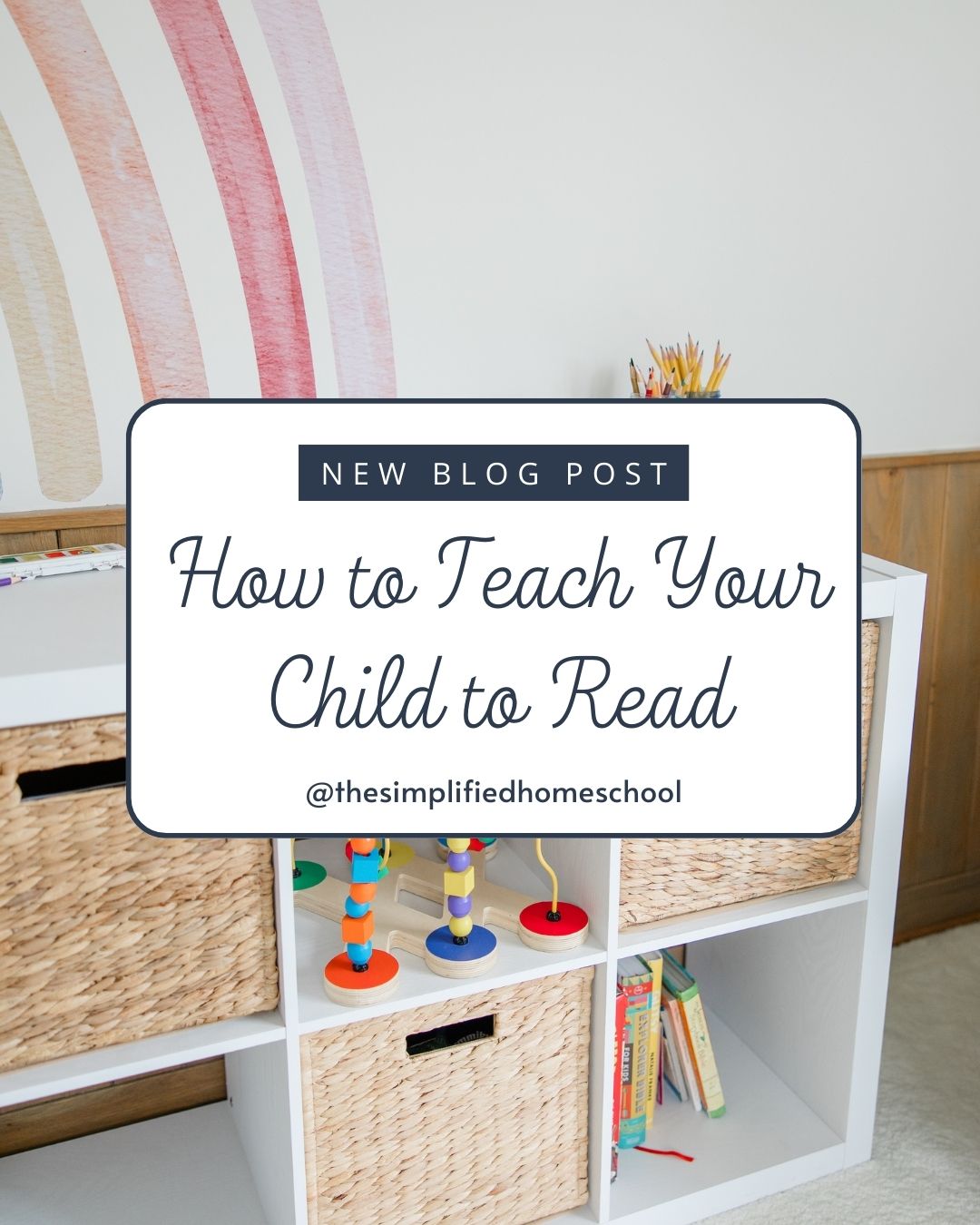How to Teach Your Child to Read (Without Losing Your Mind)
If you’re starting homeschool with a little one, the question almost always comes up: “How do I actually teach my child to read?”
Here’s the good news: you don’t need to be a trained teacher, and you don’t need to reinvent the wheel. With the right steps and a few tried-and-true resources, you can guide your child from recognizing letters to confidently sounding out words—without making either of you miserable in the process.
I taught elementary school for several years and also taught my daughter who was a really struggling reader for years and then my son who started reading at 4 years old, and these are some of my best tips and resources.
Step 1: Start with Letter Sounds and Recognition
Before kids can read, they have to connect the squiggles on the page with sounds.
Letter recognition: Make sure your child can identify both uppercase and lowercase letters.
Letter sounds: Teach the most common sound for each letter (skip the alphabet song for now—focus on sounds, not names).
📚 Resource we love: The Good and the Beautiful Language Arts
introduces letters and sounds in a gentle, open-and-go way that doesn’t overwhelm new readers. I would *not* recommend relying on this curriculum to teach reading, but it is a great piece of the puzzle and the pre-k curriculum is perfect for teaching letter sounds.
Step 2: Connect Sounds to Real Words
Once the basics are down, kids can start blending sounds into words. Think “c-a-t” becomes cat.
Start with short vowel words (cat, dog, hop).
If you want to keep it playful: use magnetic letters, flashcards, or chalk outside. If you want something more structured, we really love Teach your Child to Read in 100 Easy Lessons and the booster cards in The Good and The Beautiful.
📚 Resource we love: Teach Your Child to Read in 100 Easy Lessons is old-school but effective. Each lesson is short and scripted so you don’t have to wonder what to say.
Step 3: Build Phonics Knowledge
This is where the magic happens—kids start seeing patterns.
Teach digraphs (sh, th, ch) and blends (bl, cr, st).
Move into long vowels and vowel teams (like “ee,” “ai”).
📚 Resource we love: Secret Stories
makes phonics fun by turning letter patterns into kid-friendly “secrets.” It’s visual, memorable, and helps the rules stick.
Step 4: Practice, Practice, Practice (Without Boring Them)
Reading is a skill, and like any skill, it gets stronger with use.
Keep practice short and do not force it! Reading aloud together is just as important as having them practice.
Celebrate progress (even small wins).
Mix up methods: read books, trace words, use apps.
📱 Bonus resource: Teach Your Monster to Read
is a free app that turns reading practice into a game. My kids love it—and I love that they’re learning while they play.
Step 5: Read Aloud Every Single Day
Here’s the piece parents sometimes miss: even as your child is learning to read, you reading aloud to them is powerful.
Builds vocabulary and comprehension.
Models fluency and expression.
Keeps the love of stories alive while they’re still slogging through phonics.
Grab picture books, chapter books, or even the Bible—just make it a daily ritual.
Step 6: Keep It Simple and Enjoy the Process
The truth? Every child learns at their own pace. Some pick it up before age five, others take longer. Your job isn’t to race to the finish line; it’s to give consistent, gentle practice and keep the joy in reading.
Our Favorite Resources at a Glance:
The Good and the Beautiful — structured, open-and-go curriculum.
Teach Your Child to Read in 100 Easy Lessons — scripted, step-by-step approach.
Secret Stories — fun, memorable phonics rules.
Teach Your Monster to Read (App) — engaging practice game.
Reading Aloud — free, powerful, and essential.
Final Word
You don’t have to do everything at once. Start with letter sounds, add phonics patterns, keep reading aloud, and slowly your child will begin connecting the dots. The key is consistency—not perfection.
And if you’d like a little help getting organized, grab my free Simplified Homeschool Checklist or dive into the Simplified Homeschool Starter Kit. It’ll give you the tools and templates to make this process a whole lot less overwhelming.
Cheering you on,
Katelyn

Need more tips? Check out these blog posts:

View comments
+ Leave a comment